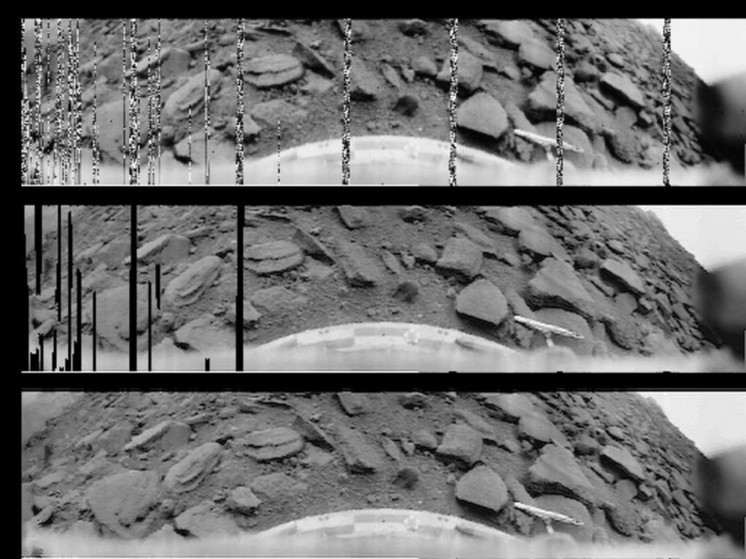The devices were sent to the second planet of the solar system with an interval of several days
In the first days of the New Year, Roscosmos declassified documents on the creation of automatic stations «Venera-11» and «Venera-12″ » 45 years ago, in September 1978, they were sent from the Baikonur Cosmodrome by Proton-K launch vehicles. Both reached their goal approximately three months after launch and fully completed their programs.
 First panorama of Venus. Photo: Roscosmos.
First panorama of Venus. Photo: Roscosmos.
Let us recall that the first spacecraft in the world to make a soft landing on the surface of Venus and take pictures of it was the Venera-9 apparatus produced by NPO. Lavochkina. He reached the surface of the hot planet on October 22, 1975 and transmitted to Earth the world's first panoramas depicting the surface of the “second planet.” Venera 10 landed on it on October 25, 1975. Such close-in-time launches were explained by the fact that in Soviet times, for each mission, spacecraft tried to be prepared in pairs, for safety reasons. If everything went according to plan, they were launched one after another in the same time window.
From “Venera-9”, for the first time in the world, panoramic images were obtained transmitted from the surface of another planet, for the first time measurements of wind speed on the surface of the planet were carried out, its orbiter became the world’s first artificial satellite of Venus. If Venera-9 worked on the surface of the planet for 53 minutes, its “partner” lasted longer — 65 minutes, transmitting a lot of additional information to the ground.
As Rudolf Bakitko, one of the employees of the Research Institute of Instrument Engineering (today — Russian Space Systems), who created interplanetary communication systems for Venus, once told MK, the first panoramas of the planet were obtained using an optical-mechanical scanning device developed by Arnold Selivanova. The images of the surface immediately turned out quite clear. The radio signal traveled the 50-million-mile distance between Venus and Earth in a few tens of minutes.
The same panoramic scanners were installed on the next pair of devices — Venera-11 and Venera-12, which were prepared for flight in 1978.
According to Roscosmos, the Venera-11 station was launched on September 9, 1978. The flight to Venus took a little less time than the previous devices — 107 days. On December 23, 1978, the separation of the orbital and descent vehicles took place, while the orbiter was placed on a flight path, and two days later the descent vehicle performed a soft landing on the surface of Venus. During the descent, the scientific instruments of the lander examined a fine chemical analysis of the composition of the atmosphere and clouds, a spectral analysis of solar radiation scattered in the atmosphere, electrical discharges in the planet's atmosphere, and also measured temperature, pressure and aerodynamic overloads. Work on the surface of the planet to transmit data to Earth lasted 95 minutes.
Scientific information about interplanetary space was transmitted from the orbiter for another two years — until February 1980.
Venus station 12″ was launched on September 14, 1978. The duration of the flight to Venus was a little more than three months — 98 days. On December 19, 1978, the orbiter and lander separated and two days later the lander softly landed on the surface of Venus. During its descent, its scientific instruments studied subtle chemical analysis of the composition of the atmosphere and clouds, spectral analysis of solar radiation scattered in the atmosphere, electrical discharges in the planet's atmosphere, and also measured temperature, pressure and aerodynamic overloads. Scientific data from the landing site was relayed through the orbiter to Earth for 110 minutes.























































Свежие комментарии